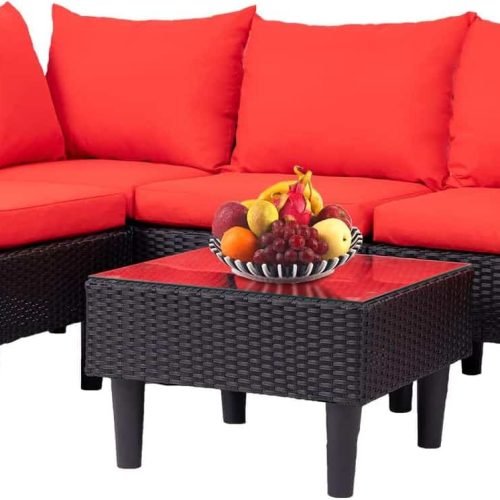Whats scary is every square inch of your garden has weed seeds ready to grow? Hey guys its JV Charles founder of Garden Josiah. Whether you’re a pro gardener or new to it, knowing how to manage weeds is key. It helps your lawn stay healthy and saves time on garden care. Early action and regular upkeep are essential for a good lawn1. But its not so tough!
Understanding lawn weeds and how to control them starts with prevention. Using a mix of methods is best. This includes choosing the right time for action, using mulch to block weeds, and pulling weeds by hand when it’s best Learn more about weed control and garden upkeep.
Key Takeaways
- Incorporate pre-emergent herbicides in early spring and fall to prevent weed growth.
- Aim to mow your lawn once a week during the growing season to promote healthy grass.
- Maintain about one inch of water per week to develop a robust root system.
- Implement manual weed removal techniques like hand-pulling for smaller infestations.
- Utilize mulch to suppress weed growth and enhance soil health.
- Ensure close plant spacing to shade the soil and prevent weed germination.
- Regular lawn inspections and early intervention are crucial for effective weed control.
Understanding Lawn Weeds: Types and Classifications
Knowing how to classify lawn weeds is key to a healthy lawn. Weeds fall into three main types: broadleaf, grassy, and grasslike. Each type needs its own way to be controlled.
Broadleaf Weeds
Identifying broadleaf weeds like dandelions and plantain is important. They have wide leaves and two seed leaves. Broadleaf weeds can live for more than two years2.
Annual broadleaf weeds, like shepherd’s purse, live for just a year2. The best time to fight perennial weeds is from mid-September to mid-October2. Trust me I know first hand!
Grassy Weeds
Grassy weeds, like crabgrass, look like grass and are hard to spot. Common perennial grassy weeds include quackgrass and tall fescue2. They spread fast and have one seed leaf.
Annual grassy weeds, like crabgrass, grow and seed in under a year2. To control them, apply pre-emergent herbicides when soil is 52 degrees Fahrenheit3.
Grasslike Weeds
Grasslike weed control focuses on weeds like wild onions. They have triangular leaves and grow differently than grass. Biennial weeds, like mullein, live for two years2.
Knowing how to manage grasslike weeds is crucial. It helps keep your lawn clean and healthy.
In summary, understanding lawn weed types is vital for effective control. By managing weeds well, you can have a lush, green lawn.
Effective Weed Prevention Methods
Keeping your lawn green and weed-free is key. It’s not just about the grass; it’s also about stopping weeds. By using the right methods, your lawn can stay vibrant and weed-free.
Using Pre-Emergent Herbicides
Pre-emergent herbicides stop weed seeds from growing. They work best when applied in early spring. Knowing when weeds grow helps these herbicides work better.
A well-kept lawn means you use herbicides less. This makes them more effective. Using them before weeds like dandelions keeps your lawn looking great.
Proper Lawn Maintenance
Regular lawn care is vital for weed prevention. Mowing at 2.5 to 3 inches helps shade weed seeds. This slows their growth.
Consistent aeration helps grass grow thick, pushing out weeds. But, be careful not to disturb the soil. This can bring weed seeds to the surface.
Fertilizing regularly helps grass grow strong. This makes it hard for weeds to compete. Mulch also helps by blocking sunlight and keeping soil moist.
Correct Watering Techniques
Watering is crucial for weed prevention. Deep watering encourages deep-rooted grass. Shallow watering favors weeds.
Water your lawn about 1 inch per week. Avoid disturbing the soil and keep the grass hydrated. This denies moisture to weed seeds.
Adjust your watering based on the season and grass type. Warm-season grasses like Bermuda and Zoysia need specific care.
Following these tips will keep your lawn healthy and weed-free. Your lawn will be a lush, green highlight in your neighborhood.
Manual Weed Removal Techniques
Manual weed control is good for young weeds and small infestations. It works best after rain when the soil is soft4. Keeping an eye out for new weeds and acting fast can stop big problems4.
Hand-Pulling Weeds
Hand-pulling weeds is a fast way to clean up a garden4. Make sure to pull out the whole root to stop it from coming back. Spring and early summer are the best times to do this4.
Using tools like weeders and dandelion diggers makes the job easier and more effective.
Using Garden Tools
For big weeds with deep roots, use tools like garden forks or fishtail weeders4. Tools like the Japanese gardening knife, hori hori, or a thin hand trowel are good for weeds with deep roots4. Mixing hand-weeding with hoeing and mulching is a solid plan for controlling weeds4.
| Tool | Best Use |
|---|---|
| Japanese Gardening Knife (Hori Hori) | Weeds with deep tap roots |
| Thin Hand Trowel | Smaller weeds |
| Garden Fork | Larger weeds, deep roots |
| Weeders and Dandelion Diggers | General hand-pulling |
Mulching: A Key to Weed Prevention
Mulching is key for weed control in gardens and lawns. It covers the soil, blocking sunlight and making it hard for weeds to grow. It also keeps the soil moist and regulates temperature. This method is good for the environment and should be part of your gardening routine.
Types of Mulch
There are many mulch types for your garden. Organic mulches like wood chips, straw, and pine needles are popular. They break down, adding nutrients to the soil. But, they need to be refreshed often to work well.
Inorganic mulches like stones and landscape fabric also stop weeds and are easy to care for. Each type has its own benefits, so picking the right one is important.
Proper Mulching Techniques
Using the right mulching techniques is crucial. Apply 2 to 4 inches of mulch, depending on the type5. You can also put cardboard or landscape fabric under the mulch to stop weeds5.
Adding 1 to 3 inches of mulch each spring or fall can really cut down on weeds6. Make sure not to pile mulch against plants to avoid rot and disease. Also, keep the mulch weed-free to stop weeds from spreading5.
FAQ
What are the best practices for weed prevention and removal in lawn care?
To keep weeds away, don’t disturb the soil too much. Use mulch to block weed growth. Target weeds when it’s best for them.
Chop off weed heads and make sure plants cover the soil. Use drip or soaker hoses for watering. These steps help a lot with lawn care.
What are the different types of lawn weeds?
Lawn weeds fall into three groups: broadleaf, grassy, and grasslike. Broadleaf weeds, like dandelions, have wide leaves. They need special treatments.
Grassy weeds, such as crabgrass, look like lawn grass. They’re hard to spot and control. Grasslike weeds, like wild onions, look like grass but are different.
How can pre-emergent herbicides help in weed prevention?
Pre-emergent herbicides stop weed seeds before they grow. Apply them in early spring and fall. This keeps your lawn weed-free.
What are the key steps in proper lawn maintenance for weed control?
Keep your lawn healthy with regular care. Mow, aerate, and water deeply but not too often. Aim for 1 inch of water per week.
Mow at the right height and frequency. This helps your grass grow strong and keeps weeds away.
What are the benefits of hand-pulling weeds?
Pulling weeds by hand is good for the environment. It works best for young weeds after it rains. Use tools like weeders to get the roots.
This ensures the weeds won’t come back. It helps keep your garden weed-free.
How can garden tools aid in manual weed removal?
Special tools, like garden forks or fishtail weeders, are key for big weeds. They help pull out the whole root system. This stops weeds from growing back.
It keeps your garden weed-free.
What are the different types of mulch for weed control?
Organic mulches, like wood chips or straw, improve the soil as they break down. Inorganic mulches, like landscape fabric, block light and stop weeds. Both types keep weeds away.
What are proper mulching techniques to prevent weeds?
Mulch should be 2 inches deep and not piled against plants. This prevents rot. Refresh organic mulch often for best results. Add cardboard or landscape fabric for extra weed control.
How do I identify broadleaf weeds in my lawn?
Broadleaf weeds, like dandelions, have wide leaves. They’re easy to spot because of their unique leaves. Special treatments work well against them.
What types of techniques are effective for managing grassy weeds?
Grassy weeds, like crabgrass, are hard to spot because they look like lawn grass. Keep your lawn healthy with proper mowing and watering. Use pre-emergent herbicides to stop them before they grow.






